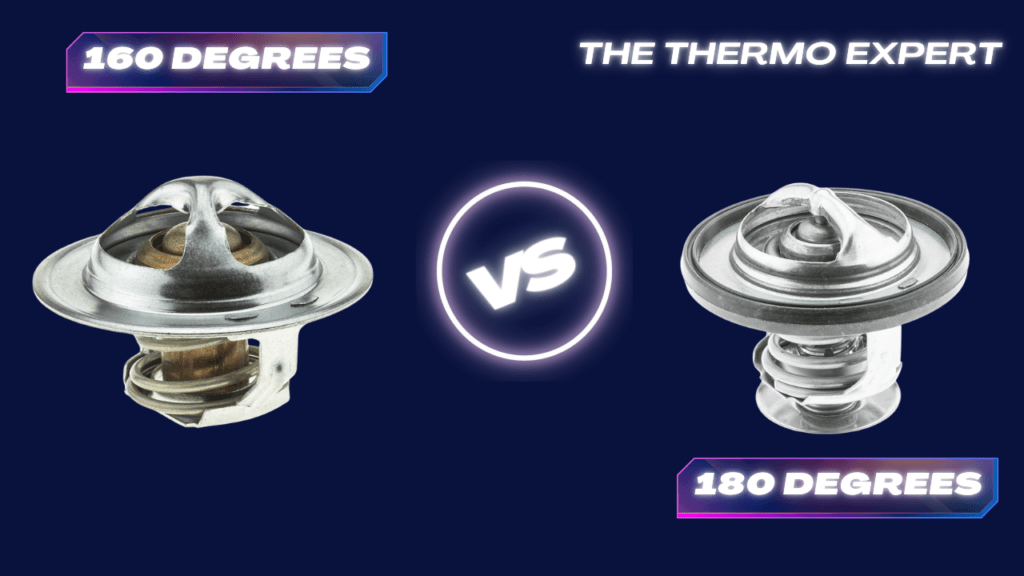Honeywell Thermostat vs. Nest: The Ultimate 2025 Smart Home Showdown
Choosing a smart thermostat is one of the most impactful upgrades you can make to your home. It’s the brain of your comfort system, directly influencing your daily experience and your monthly energy bills. In this arena, two names dominate the conversation: Google Nest, the tech-forward innovator, and Honeywell, the seasoned industry veteran. While both promise comfort and savings, they approach the task from fundamentally different philosophies.
This isn’t just a simple feature comparison. It’s a deep dive into which thermostat is truly best for *your* specific home, HVAC system, and lifestyle. We’ll break down the nuanced differences in learning algorithms, system compatibility, user experience, and overall value to help you make a confident, informed decision.
The Quick Verdict: Which One Should You Buy?
For most homeowners with standard HVAC systems who prioritize ease-of-use and powerful automation, the Google Nest Learning Thermostat is the best choice. Its elegant design and true learning algorithm create a “set it and forget it” experience that genuinely saves energy with minimal effort.
For homeowners with complex, multi-stage, or proprietary HVAC systems (like high-end units from Lennox, Trane, or Carrier), a Honeywell Home thermostat like the T9 or T10 Pro is the superior option. It offers unparalleled granular control, better compatibility with advanced systems, and powerful room-by-room temperature management via smart sensors.
Deep Dive: Google Nest – The Intelligent Innovator
Google’s Nest didn’t just make thermostats smart; it made them beautiful and intuitive. The core philosophy of the Nest Learning Thermostat is to eliminate the need for manual scheduling by intelligently adapting to your life.
Key Features That Set Nest Apart
- True Adaptive Learning: This is Nest’s killer feature. For the first week or two, you adjust the temperature as you normally would. Nest observes these changes, learns your daily and weekly patterns (when you wake up, leave for work, go to sleep), and automatically builds a custom schedule. It continuously refines this schedule over time.
- Home/Away Assist (Geofencing): Using a combination of built-in sensors and your phone’s location, Nest knows when the house is empty. It can then automatically set itself to an energy-saving Eco temperature, turning back on to your preferred temperature just before you arrive home.
- Sleek Design & Intuitive UI: The Nest’s iconic circular design with a high-resolution display and a satisfying metal ring for adjustments is a hallmark of premium product design. The mobile app is similarly clean, user-friendly, and provides insightful Energy History reports.
- Seamless Google Ecosystem Integration: As a Google product, it works flawlessly with Google Assistant and other Nest devices (like cameras and speakers) for a cohesive smart home experience.
Who is the Nest Thermostat Perfect For?
- ✅ The tech-savvy homeowner who loves elegant design and smart automation.
- ✅ Busy individuals or families who want a “set it and forget it” device that optimizes savings without constant tinkering.
- ✅ Users who are heavily invested in the Google Assistant and Android ecosystem.
- ✅ Homes with standard, single-stage or two-stage heating and cooling systems.
Deep Dive: Honeywell Home – The HVAC Expert
With over a century of experience, Honeywell’s strength lies in its deep understanding of how HVAC systems actually work. Their smart thermostats, particularly the T-series (T9, T10), are designed not just for convenience, but for precision control over complex, high-efficiency equipment.
Key Features That Define Honeywell
- Smart Room Sensors: This is Honeywell’s most powerful feature and a direct advantage over Nest. Instead of just reading the temperature in the hallway, you can place wireless sensors in multiple rooms. The thermostat can then be told to average the temperature across several rooms or, more importantly, prioritize a specific room (e.g., “make the nursery exactly 70°F at night”). This solves the common problem of hot and cold spots in a home.
- Advanced HVAC System Control: This is where Honeywell’s expertise shines. Their thermostats offer granular control over multi-stage heat pumps, dual-fuel systems, and accessories like whole-home humidifiers, dehumidifiers, and ventilators—features that Nest often struggles with or cannot control at all. For high-end, “communicating” systems from brands like Trane and Lennox, a Honeywell thermostat is often the only compatible smart option.
- Broad Smart Home Compatibility: While Nest focuses on Google and Alexa, many Honeywell models offer wider integration, including with Apple HomeKit, Samsung SmartThings, and IFTTT, making them a more flexible choice for diverse smart home setups.
- User-Driven Scheduling: While some models offer geofencing, Honeywell’s core philosophy relies on user-created schedules. This is a benefit for those who prefer predictable, manual control over an algorithm’s decisions.
Who Should Choose a Honeywell Thermostat?
- ✅ Homeowners with high-efficiency, multi-stage, or variable-speed HVAC systems.
- ✅ Anyone with a proprietary “communicating” system from a major brand like Lennox, Carrier, or Trane.
- ✅ People who want to solve hot/cold spot issues by prioritizing comfort in specific rooms.
- ✅ Users who need integration with Apple HomeKit or want precise control over HVAC accessories.
Nest vs. Honeywell: Head-to-Head Comparison
| Feature | Google Nest Learning Thermostat | Honeywell Home T9/T10 Pro |
|---|---|---|
| Learning & Automation | ✅ Automatically learns and creates a schedule based on your behavior. Truly adaptive. | ❌ Relies on manual scheduling. Offers geofencing but no deep learning. |
| Energy Savings | Excellent, driven by learning and robust Home/Away Assist. Provides detailed energy reports. | Good, but driven by user diligence in scheduling and geofencing. Can be more efficient on complex systems if configured correctly. |
| HVAC Compatibility | Excellent for standard systems (up to 2-stage). ⚠️ Incompatible with many proprietary “communicating” systems. Limited control over accessories. | ✅ Superior. Designed for complex multi-stage, dual-fuel, and variable-speed systems. Full control over humidifiers, ventilators, etc. |
| Room Sensors | Supports separate sensors, but they only detect temperature for basic averaging. | ✅ Best-in-class sensors that detect temperature, humidity, and motion. Can prioritize specific rooms for comfort. |
| User Interface & App | ✅ Premium hardware, intuitive dial control. Best-in-class mobile app experience. | More traditional touchscreen interface. App is functional but less polished than Nest’s. |
| Smart Home Integration | Excellent with Google Assistant and Alexa. The cornerstone of the Google Nest ecosystem. | ✅ More flexible. Works with Google, Alexa, Apple HomeKit, Samsung SmartThings, and more. |
| Installation | Generally very DIY-friendly for standard systems. Interactive on-screen guide. | Can be more complex, especially when wiring for advanced accessories. May require a professional for high-end systems. |
Top Smart Thermostats to Consider
Ready to upgrade? Here are the top models from both brands available on Amazon.

Google Nest Learning Thermostat (3rd Gen)
The flagship smart thermostat. With its auto-scheduling, sleek design, and proven energy savings, it’s the best “install and forget” option for most homes with standard HVAC systems.
Check Price on Amazon
Honeywell Home T9 Smart Thermostat
Honeywell’s direct competitor to Nest. Its standout feature is the included Smart Room Sensor, which allows you to eliminate hot and cold spots by prioritizing comfort where you need it most. The best choice for complex systems.
Check Price on Amazon
Amazon Smart Thermostat (Budget Pick)
If you’re on a budget, the Amazon Smart Thermostat (built with Honeywell technology) is an incredible value. It lacks Nest’s learning but offers Alexa-powered scheduling and geofencing for a fraction of the price. Requires a C-wire.
Check Price on AmazonFrequently Asked Questions (FAQ)
Do I need a C-wire for Nest or Honeywell?
Most modern smart thermostats, including Honeywell models and the budget Nest Thermostat, require a C-wire (Common wire) to get continuous power. The premium Nest Learning Thermostat can sometimes work without one by “power stealing,” but this can cause issues with some HVAC systems. It is always recommended to have a C-wire for maximum reliability.
Which thermostat will save me more money?
It depends. For most people, Nest’s automatic learning and Home/Away Assist will likely lead to more effortless savings. However, if you have a very complex, high-efficiency system, a properly configured Honeywell thermostat could save more by running the equipment exactly as the manufacturer intended, avoiding inefficient stage changes or reliance on expensive auxiliary heat.
Can Nest control my whole-home humidifier?
Yes, the Nest Learning Thermostat can control a single accessory, such as a humidifier or dehumidifier, but its control is often less nuanced than what a dedicated Honeywell model like the T10 Pro can offer. If you have multiple accessories, Honeywell is the clear winner.
Is one brand easier to install than the other?
For a basic installation, both are quite DIY-friendly and provide good instructions. Nest’s app-based walkthrough is often considered slightly more polished. However, for a complex system with multiple wires and accessories, Honeywell’s traditional setup can be more straightforward for a professional HVAC technician.
Final Thoughts: Comfort, Control, or Convenience?
The choice between Honeywell and Nest boils down to your priorities:
- Choose Google Nest if you value elegant design, effortless automation, and a seamless user experience. It’s the best choice for making a standard home smarter.
- Choose Honeywell Home if you value precision control, have a complex HVAC system, and want to solve comfort problems room by room. It’s the best choice for making a smart home’s HVAC system work at its absolute peak.
Before you buy, always use the brand’s online compatibility checker to ensure the thermostat will work with your specific HVAC wiring. When in doubt, consulting a qualified HVAC technician is a wise investment.




